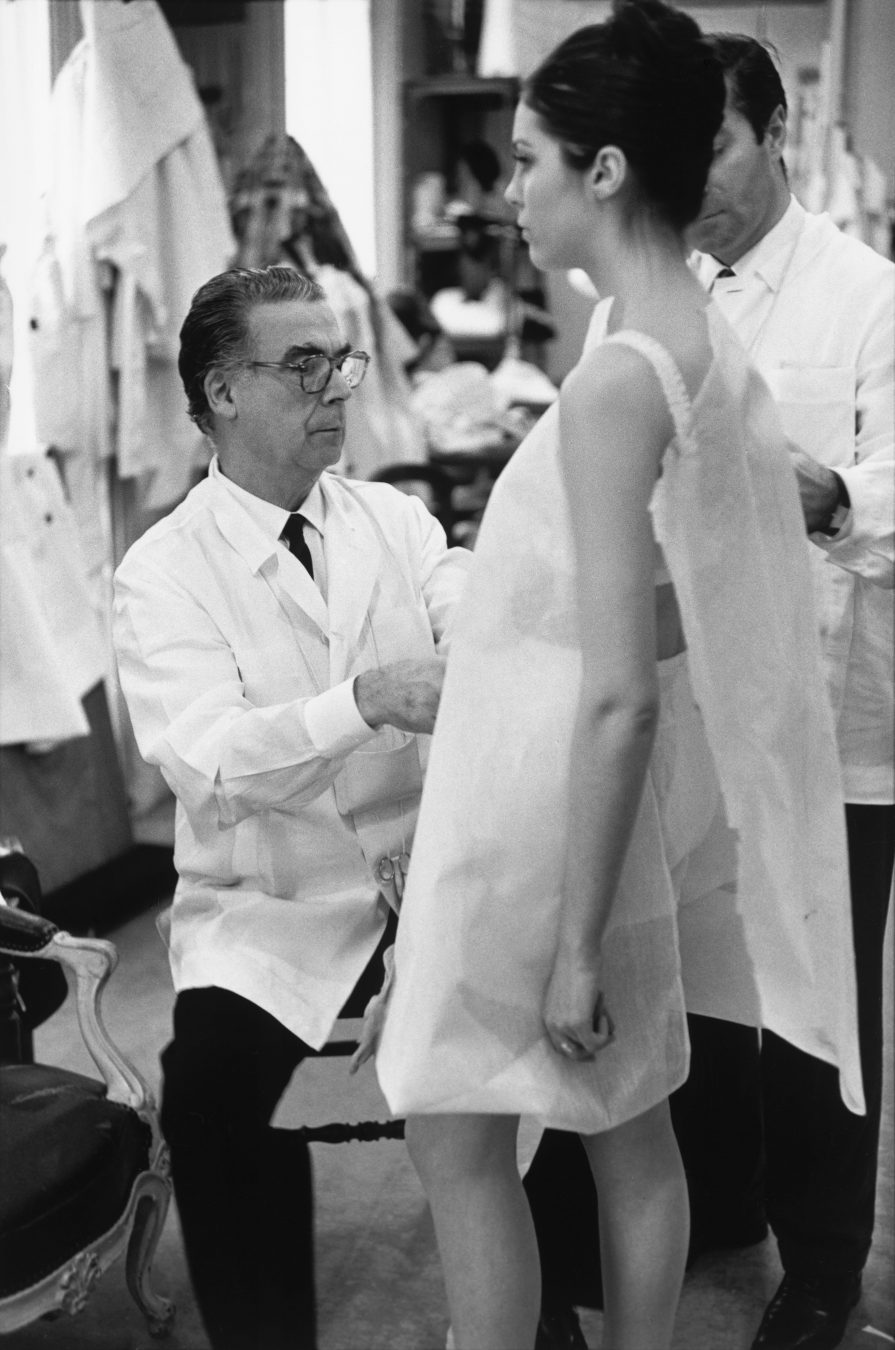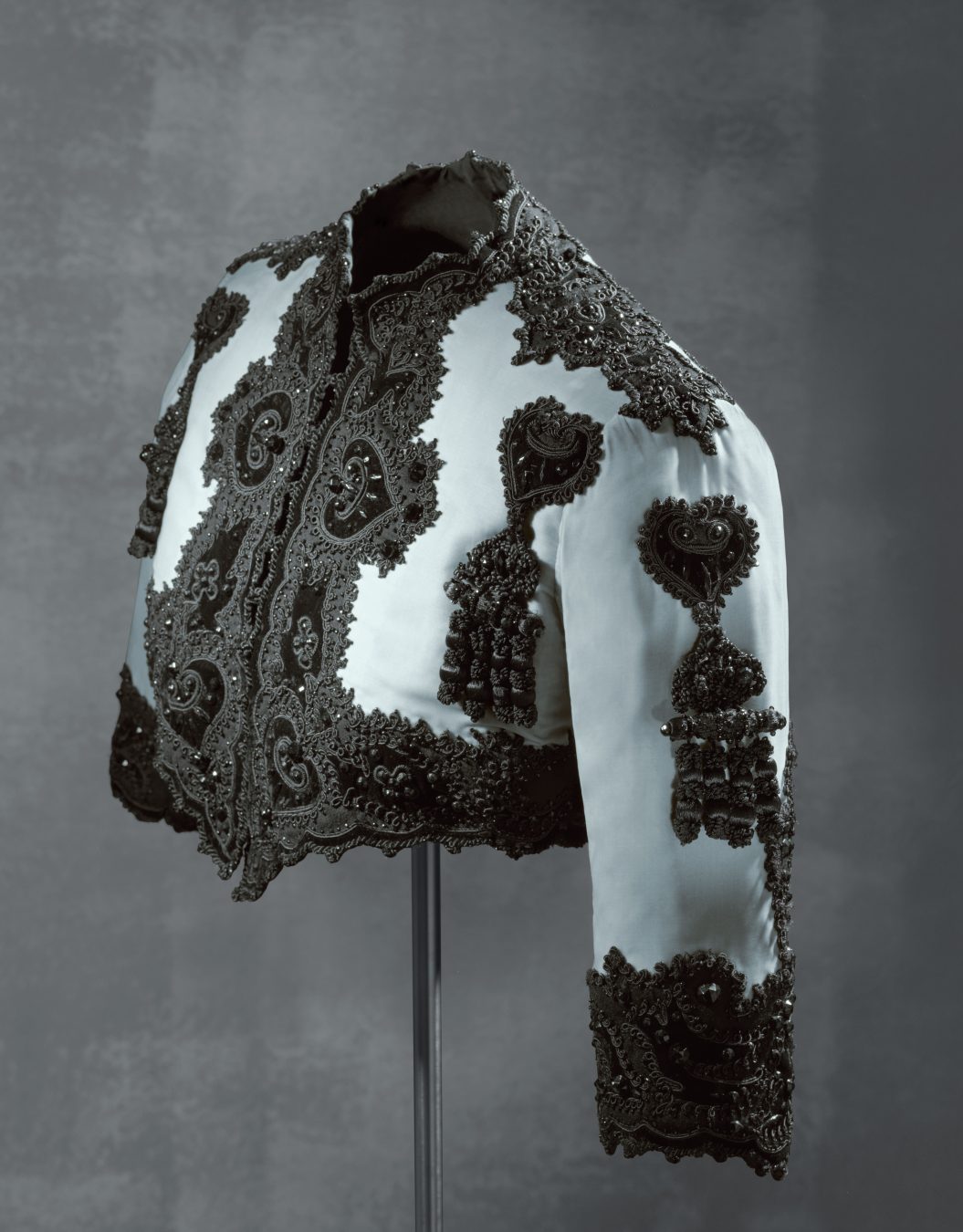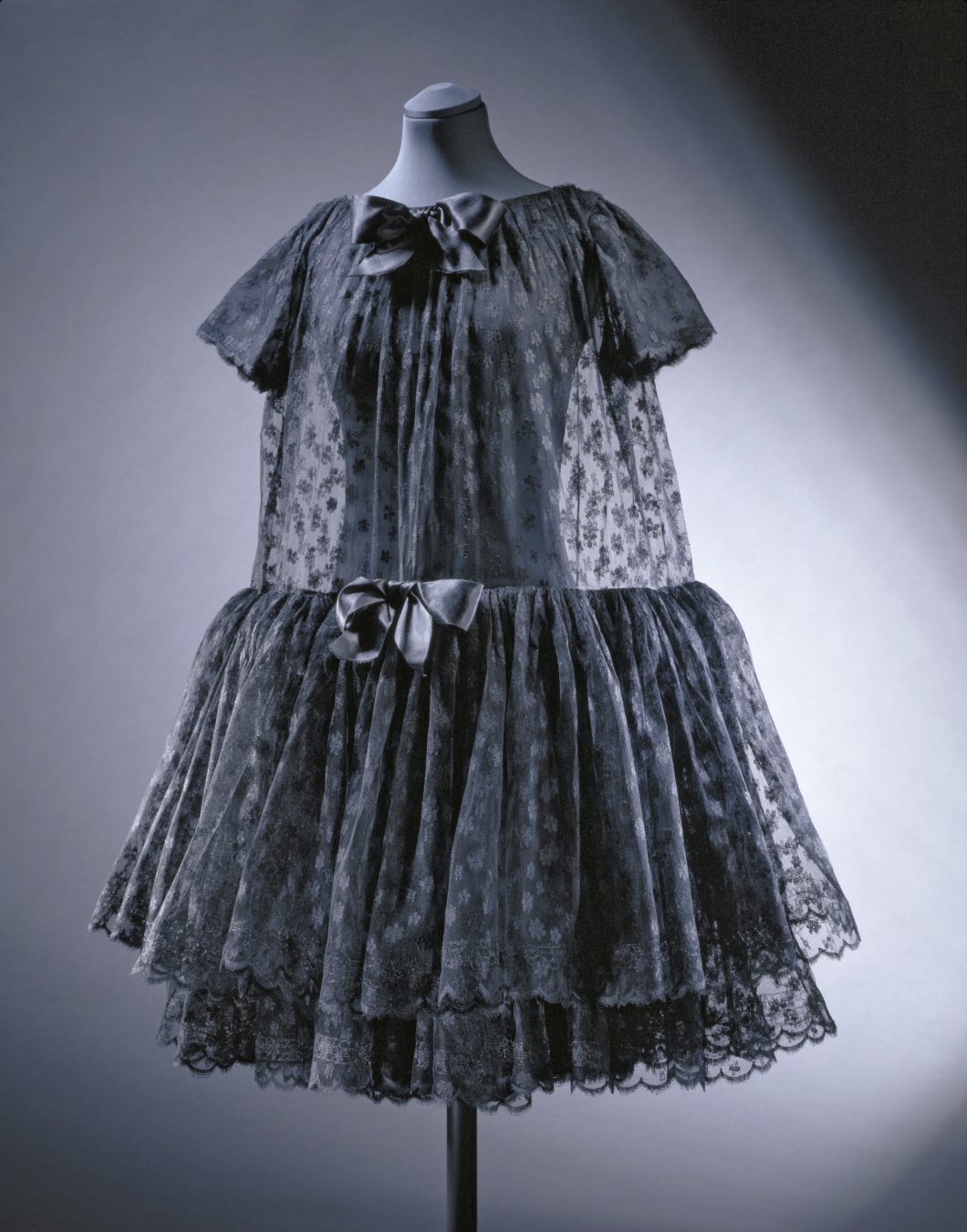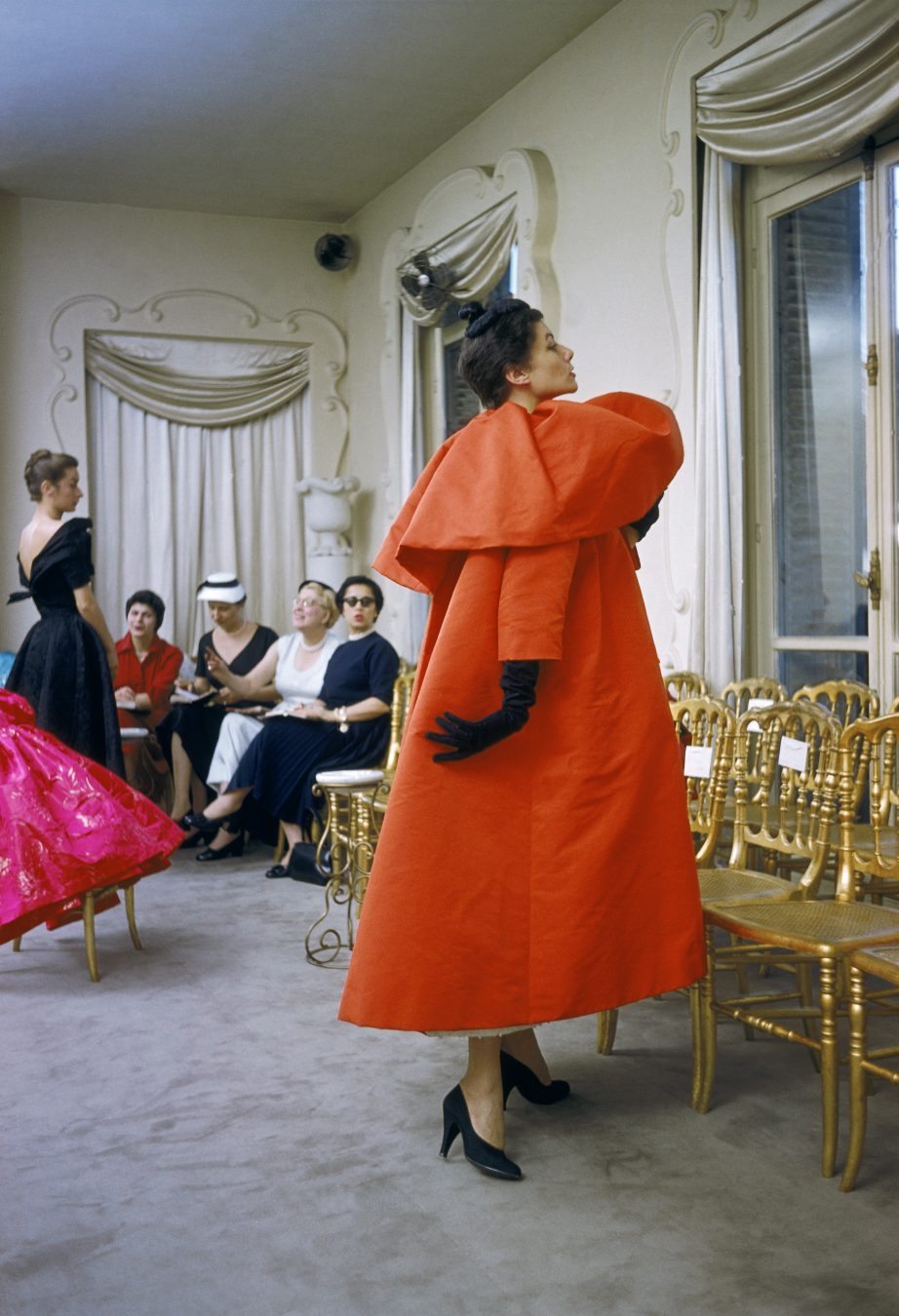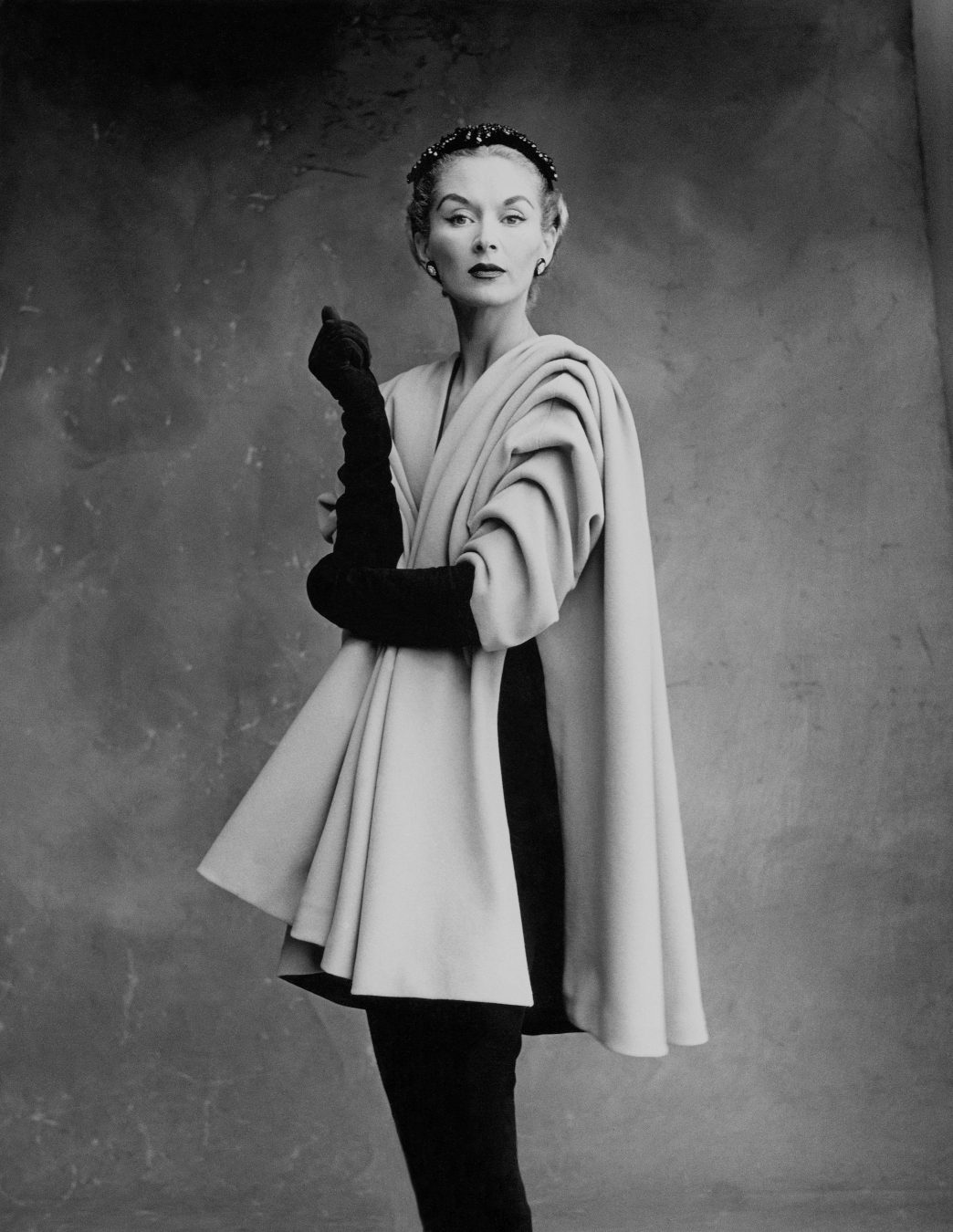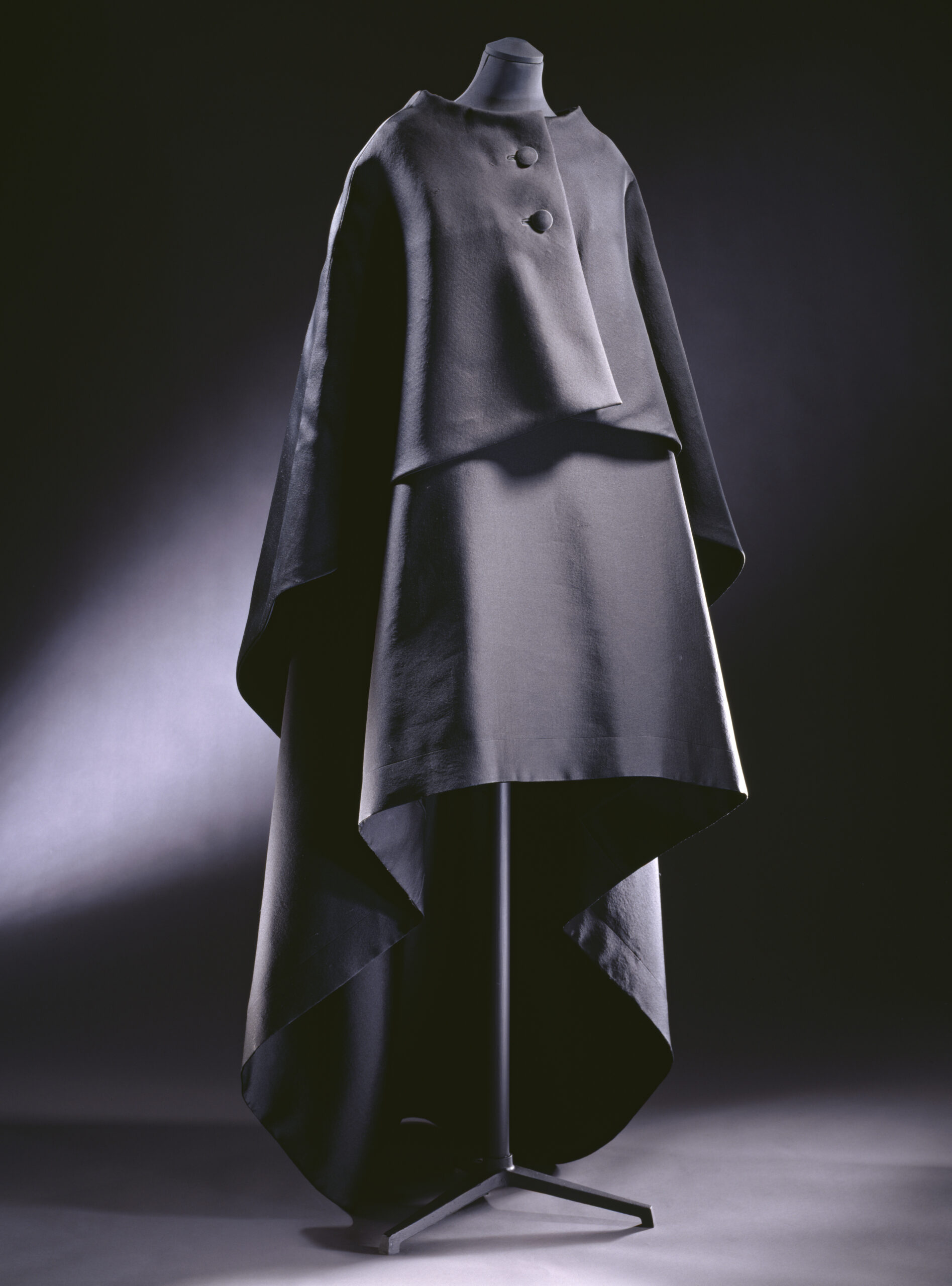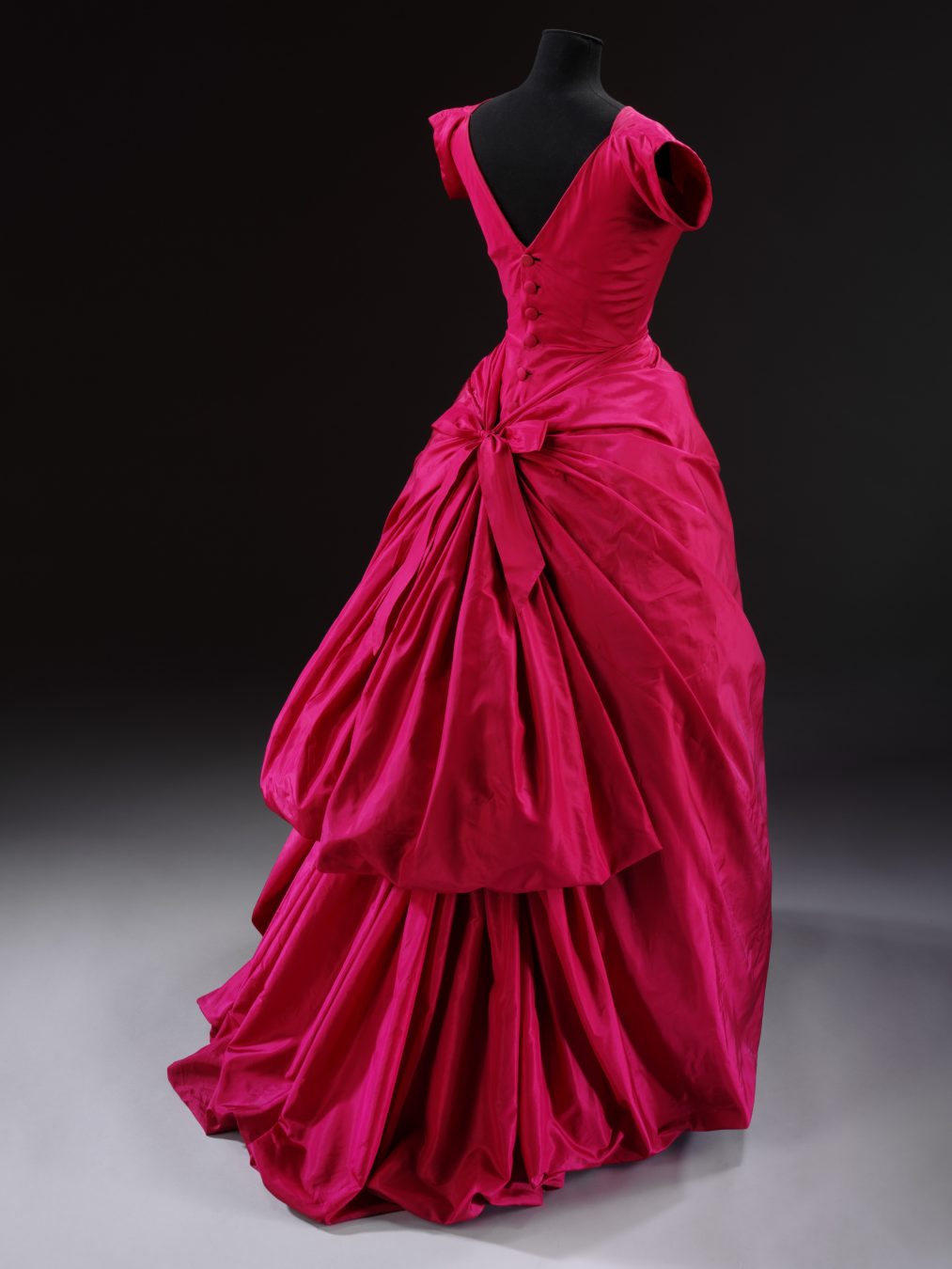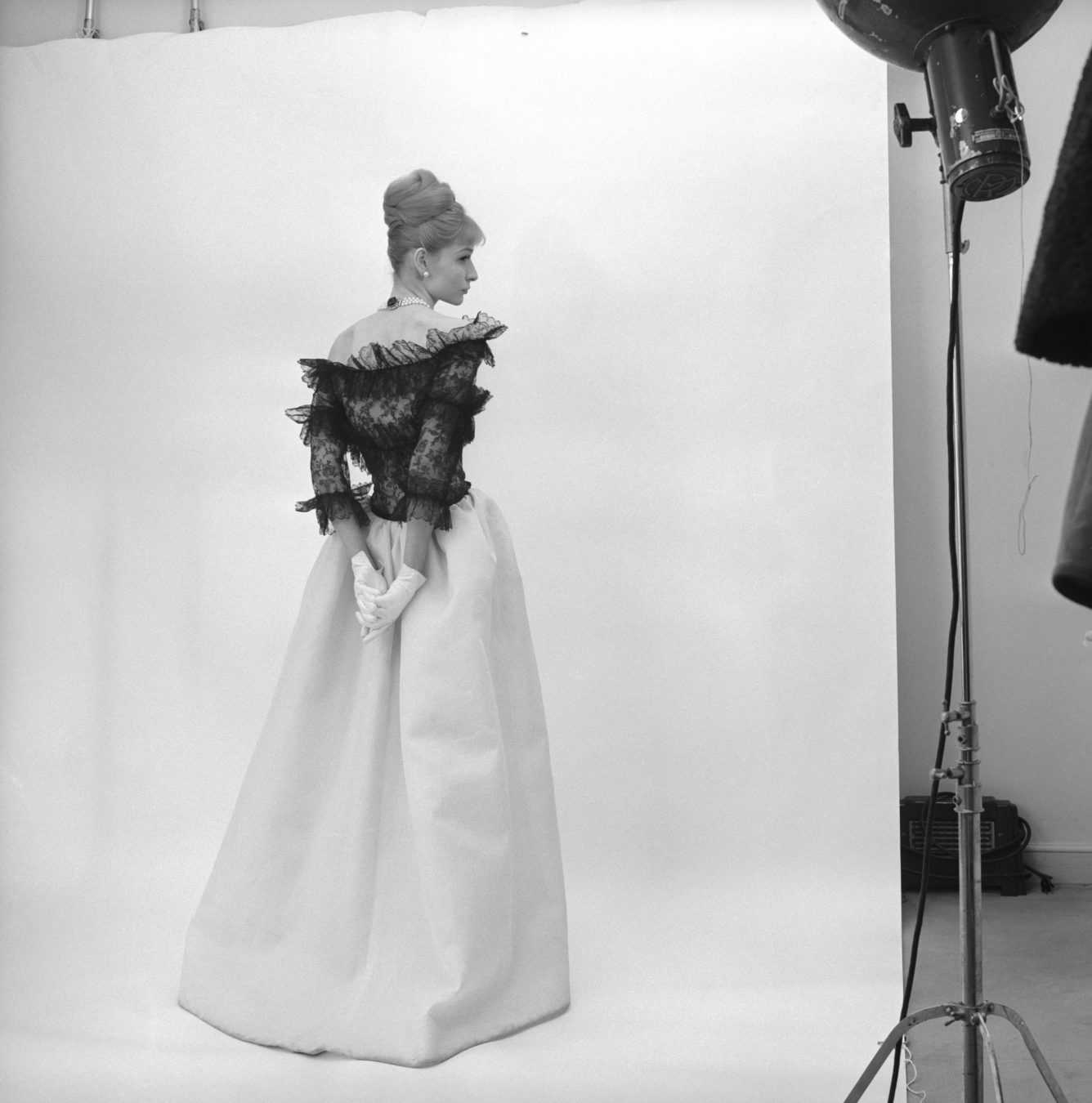The shift dress, the baby-doll, the tunic, and the sack: one man is largely responsible for how women have dressed for the last hundred years. Cristóbal Balenciaga’s influence on modern design is the subject of “Balenciaga: Shaping Fashion,” currently displayed at the Victoria and Albert Museum in London.
Entering the exhibition within the museum’s fashion wing—the biggest dress collection in the world—visitors are met with a lineup of distinctly different black Balenciaga frocks. Today, these designs are beloved; at the time of their creation, however, some were considered scandalous and unflattering. The shapeless sack, for instance, made its debut in the late 1950s to unfavourable reviews. “It’s hard to be sexy in a sack!” cried the Daily Mirror in 1957. With straight lines that contrasted sharply to the popular hourglass favoured by Balenciaga’s main competitor Christian Dior, the sack dress worked against popular demand. But soon enough, people began to change their tune; once-disliked silhouettes became the benchmark for pushing boundaries.
The Victoria and Albert exhibition (on until Feb. 18, 2018) narrows in on the later part of Balenciaga’s career, focusing on the 1950s and 1960s—the decades known as his most creative period. During these years he not only dressed some of the most renowned women of the time, such as Hollywood actress Ava Gardner, socialite and 1960s fashion icon Gloria Guinness, and world’s wealthiest woman Mona von Bismark, but also introduced multiple revolutionary shapes to the world.
Disregarding conventional standards of beauty and how they translated to fashion, Balenciaga was more interested in the sculptural design of garments, pioneering entirely new uses for fabric. “A woman has no need to be perfect or even beautiful to wear my dresses,” he once said. “The dress will do all that for her.”
For the first time, the Victoria and Albert Museum used x-ray technology to take a forensic, never-before-seen look at the hidden details inside Balenciaga’s most iconic garments. These images are displayed next to key pieces, acting as a roadmap into how such a piece could be created. Take, for example, the bright fuchsia balloon hem dress, which would become one of Balenciaga’s signatures. Making dramatic use of colour and texture, he employed his superior fabric draping skills with paper-thin silk taffeta to create the memorable evening dress. Just behind the gown, which sits encased in protective glass and rotates to offer visitors a full view of its craftsmanship, is a 3D image in black and white. It shows the supported hoops and “bagging out” technique that helped create a fuller skirt as the wearer walked. Quirky hidden ties, which knot just above the knee, added to the effect.
“Balenciaga: Shaping Fashion” marks the centenary of Balenciaga’s first fashion house in San Sebastian, and the 80th anniversary of his famous maison in Paris. The exhibition is organized around three main sections: “Front of House,” including Balenciaga’s salons; behind-the-scenes in Balenciaga’s “Workrooms”; and the lasting impact of “Balenciaga’s Legacy,” featuring the work of 30 designers who were deeply inspired by Balenciaga. On display in “Balenciaga’s Legacy” are explorations of his aesthetic, reflected in the work of his former apprentices André Courrèges and Emanuel Ungaro, and more recently revived by designers such as Phoebe Philo for Céline. A man unafraid of breaking from traditional outlines and techniques to create entirely new forms, Balenciaga’s influence is still evident in fashion today. It is safe to say the world of style would have been very different without him.

